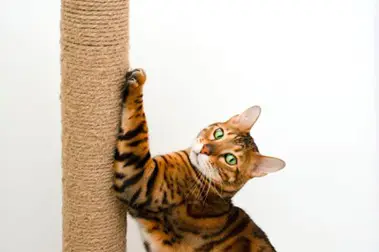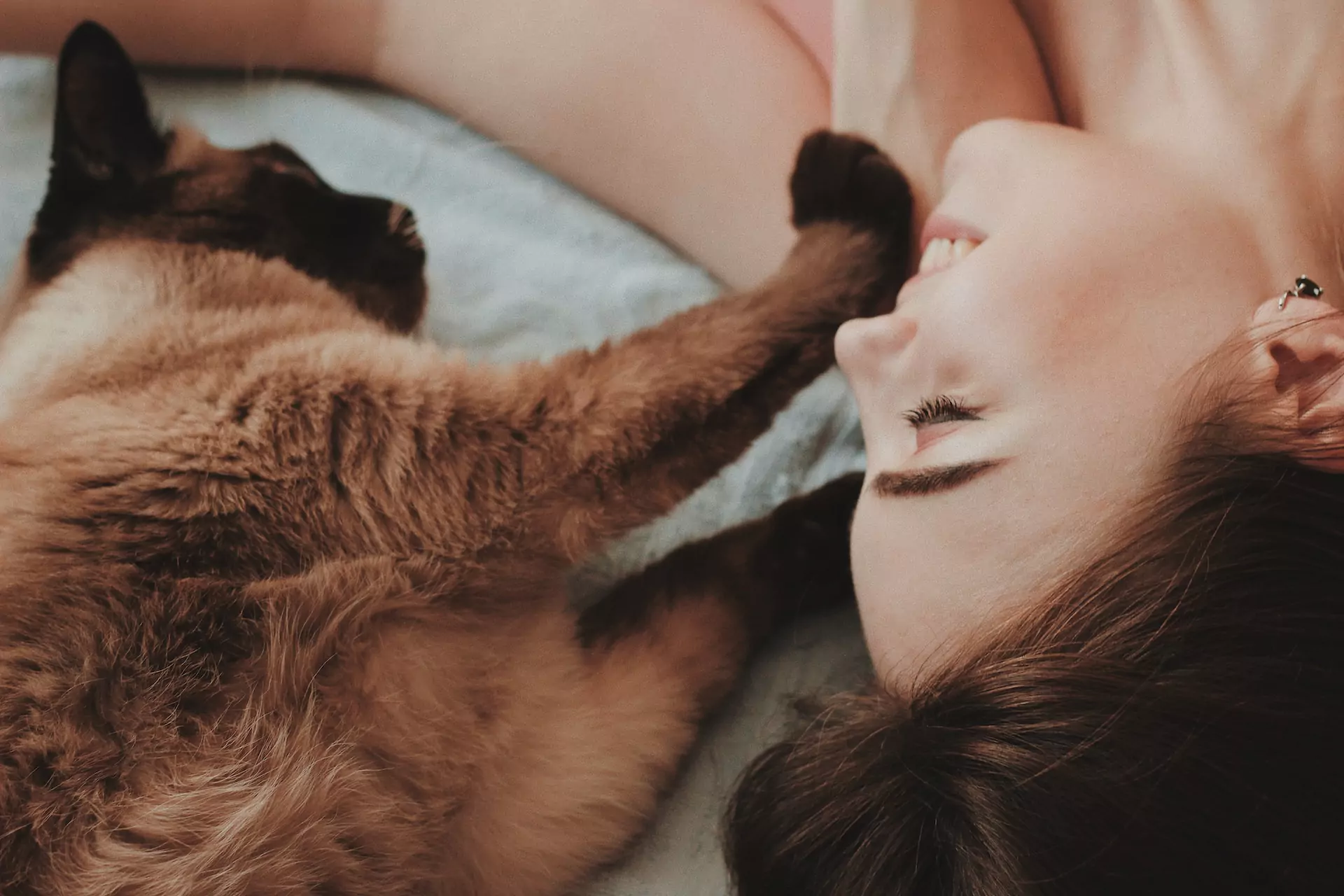Declaw Decision Giving You Pause? Try these 4 Alternatives for Your Cat’s Paws
The itch to scratch is natural for your cat. By instinct, cats scratch to mark territory, stretch their bodies, and sharpen or grind down their nails. But your favorite furniture pieces don’t need to serve as your feline companion’s nail file!
Some pet parents have historically considered cat declawing, also known as onychectomy, to curb unwanted injuries to themselves or their belongings.
Alternatives to Declawing Your Cat
While declawing a cat might be medically necessary for some pets or family members who are immunocompromised or on blood thinners, the surgical monitor procedure is no longer recommended by the American Veterinary Medical Association.
Here are four strategies for curbing unwanted scratching to try instead of a declaw procedure:
Train Your Cat Toward Positive Scratching Behaviors
Rather than trying to rule out instinctual behavior for your cat, it’s possible to teach them where and when it’s appropriate to scratch out whatever they need.
First, provide plenty of acceptable scratching materials throughout your home. Scratching posts, cat trees, and different kinds of materials (carpet, sisal, cardboard, etc.) in horizontal and vertical arrangements around your home will help promote healthy scratching habits.
Whenever you see your cat practicing positive scratching behaviors: praise them!
If you find your cat scratching furniture, redirect their attention to designated scratching materials and give them praise if they demonstrate your desired behavior.
You may need to make enticing surfaces you don’t want to be scratched less desirable. Place scratch aversions like double-sided tape, aluminum foil, or spray deterrents on off-limit items during training phases—and make a positive option, like a scratching post, available nearby.
If your cat scratches you during play, calmly set them down and walk away. Losing your attention reinforces that the behavior isn’t okay and will help teach your cat not to scratch you going forward.
Trim Your Cat’s Nails Regularly to Reduce Claw Risks
Your cat may scratch furniture in an attempt to trim their own nails. Beat them to the punch by making a habit of keeping your cat’s nails short. Trimmed claws decrease the risks of damaging you or your belongings!
Find a good pair of feline nail trimmers and learn how to clip your cat’s nails:
- To start, help your cat relax before extending their claws by gently pressing on their toes
- Use your clippers to cut only the tip of the nail—take care to avoid the “quick”, or vein, inside their nail
- Remove the nail hook: this is what tears surfaces so removing it drastically reduces any potential for damage
- Be sure to give them a treat for being a good patient!
If you need help feeling confident trimming your cat’s nails yourself, ask your veterinarian or groomer to demo how they perform the task.
Nail Caps Can Decrease Damage from Cat Scratching
Similarly to keeping them trimmed, fitting your cat’s nails with caps can help reduce harm in your home.
Rounded vinyl nail caps slip over each of your cat’s claws to allow them to scratch without causing damage. These smooth caps are secured with pet-safe glue and come in a variety of colors. Nail caps may take some getting used to, but most cats tolerate them well.
After four to six weeks, each set of nail caps will shed naturally as your cat’s claws grow and need to be replaced.
Dissuade Cat Scratching with Pheromone Sprays
Often used to prevent aggressive behaviors in cats like urine marking, synthetic pheromones like Feliway can also help reduce the need to scratch.
If your cat scratches a furniture piece regularly, spray it with Feliway directly, or look for the plug-in diffuser to deter scratching behaviors throughout the room. Just be mindful not to use these pheromones on scratching posts where you’re encouraging positive habits.
Understanding The Procedure For Declawing Cats
As veterinary care professionals, we provide accurate and unbiased information in order for you to make an educated decision on behalf of your furry feline friend.
If you are considering declawing your cat, here’s what you should know:
What is Blade Declawing?
Because claws are permanently affixed to a cat’s knuckle, declawing means removing all or part of the third bone from a cat’s paw. The medically approved procedure that we perform is called blade declawing.
In a blade declaw, an instrument with a sliding blade cuts a straight line through the joint between the entire claw growth and the rest of the cat’s paw. This is the most common method for declawing cats of any age.
Should Declawed Cats Be Allowed To Go Outside?
The outdoors presents more danger to declawed cats unable to defend themselves against any potential predators they encounter. Consider the decision to declaw your cat a commitment to keeping them safely indoors for the rest of their life.
Schedule An Appointment With Your Des Moines Veterinarian to Discuss the Best Care for Your Pet
At Ingersoll Animal Hospital, we understand that every household’s needs are unique and are committed to providing the resources and care to help your feline companion have the happiest and healthiest life possible. Request an appointment with one of our veterinarians today to have any questions about your cat’s care answered directly.





